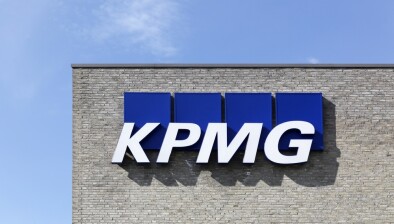KPMG: Scottish GDP to hit pre-pandemic levels by Q1 2022
The lifting of restrictions and a positive outlook for manufacturers and oil and gas businesses in 2021 will spark a stronger than previously projected lift-off for the Scottish economy this summer, according to the latest analysis in KPMG’s UK Economic Outlook.

Catherine Burnet, regional chair for KPMG in Scotland
Scotland’s GDP will grow by 6.4% in 2021 (up from 5.5% forecast in March), allowing the Scottish economy to reach its pre-Covid level by the first quarter of 2022. Growth will be supported by manufacturers that benefited from increased investment during the early stages of the pandemic and by oil and gas businesses experiencing an increase in global demand and rising oil prices.
Looking further ahead, while KPMG’s GDP growth projections for 2022 have been revised slightly downwards (5.2% in June versus 5.8% forecast in March), once Scotland regains its pre-pandemic level of output in early-2022, services firms are expected to underpin more consistent growth.
KPMG predicts Scottish financial and business services firms will be the main contributor to national GDP growth in long term, with the relative lesser impact of Brexit on Scotland’s financial services sector compared to London an important factor.
Catherine Burnet, regional chair for KPMG in Scotland, said: “Our latest analysis shows that the pace of Scotland’s economic recovery is accelerating as restrictions ease, while the performance of two of our most important sectors – manufacturing and oil and gas – drives us further forward.
“How quickly we move along the Scottish government’s roadmap out of lockdown over summer could have an impact on our projections, but it’s still incredibly encouraging to see GDP growth could return to pre-pandemic levels by the start of next year.”
Meanwhile, despite the positive forecast, Scotland’s GDP growth is projected to fall slightly behind the UK as whole during 2021 and 2022. UK GDP is forecasted to grow by 6.6% in 2021 and by 5.4% in 2022, with Scottish businesses facing the same potential challenges as firms across the UK.
Rising cost pressures and the reversal of temporary tax cuts will add to inflation this year, but KPMG’s analysis shows it should moderate towards the second half of next year, and average 1.7% in 2021 and 2.1% in 2022. With spare capacity still in place, KPMG expects the Bank of England to keep interest rates on hold in the short term in order to allow the economy to fully recover and mitigate the downside risks to the outlook.
From the onset of the pandemic, businesses have been partially shielded from insolvency both by the direct financial support on offer as well as by temporary measures suspending and relaxing insolvency procedures. So, once the temporary regime is over and businesses are forced to confront a new normal, there could be a significant uptick in the number of company insolvencies, despite interest rates remaining low in the short term. This could mean a peak of about 8,000 insolvencies around the turn of the year before numbers fall back again to around 4,000 per quarter.
The outlook beyond the short-term paints a less strong picture, with the end of the super deduction allowance and the rise in corporate tax causing a sharp fall in business investment from 2023, while consumers readjust their spending patterns.
Catherine Burnet added: “We cannot forget that some sectors of the Scottish economy, such as tourism, hospitality and retail, have been more acutely affected by the pandemic than others.
“The end of government support schemes may coincide with a rebound in demand for these sectors, but there is still a steep hill to climb to overcome the disruption created by Covid-19.
“This challenging environment, combined with factors such as rising cost pressures, could slow Scotland’s economic recovery down.”
Yael Selfin, chief economist at KPMG UK, commented: “As restrictions are lifted and consumers flock back, we expect a robust recovery ahead. Some sectors, such as manufacturing and construction, have already recovered most of the ground lost last year, while for others such as hospitality, the big times are now.
“But the possible emergence of new variants of the virus that are less responsive to the current vaccines is still a downside risk, albeit less severe than previously, as the economy has adapted to operating under social distancing restrictions. An expected rise in the level of insolvencies, as government support programmes are withdrawn, could also impact recovery.”






